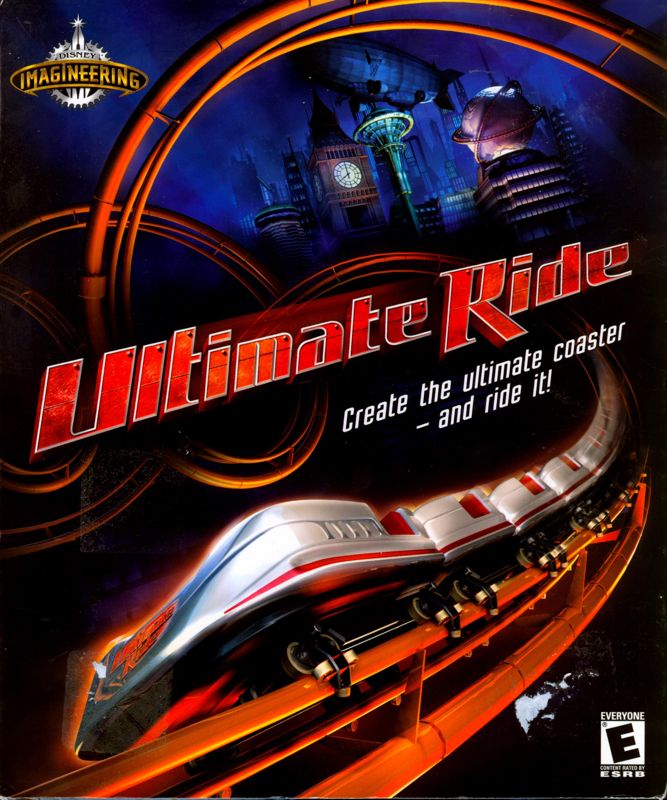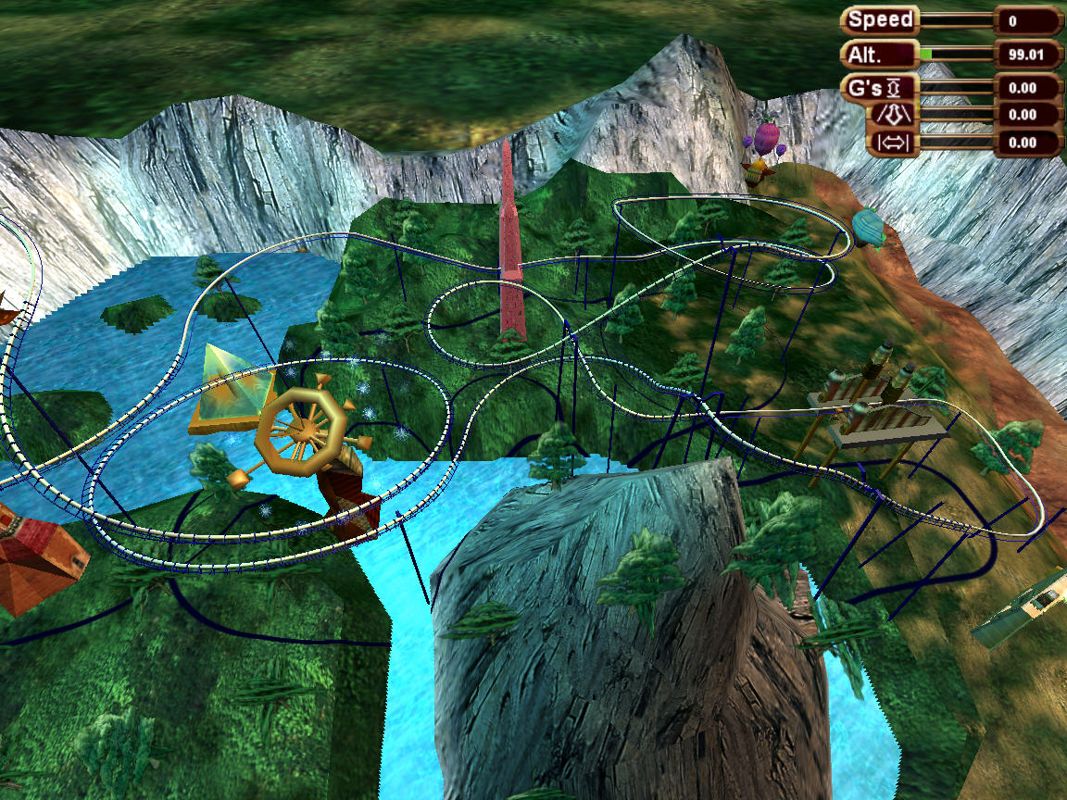Retro Replay Review
Gameplay
Ultimate Ride places you in full control of coaster construction with an intuitive interface that feels accessible to newcomers and deep enough for veteran builders. With three distinct coaster types—steel, wooden, and hanging—you can experiment with twists, loops, drops, and corkscrews to test both your creativity and your understanding of ride dynamics. The physics engine is robust, ensuring that your creations behave realistically; too sharp an angle or an excessive drop can send your coaster cart tumbling off the track, adding stakes to every design decision.
(HEY YOU!! We hope you enjoy! We try not to run ads. So basically, this is a very expensive hobby running this site. Please consider joining us for updates, forums, and more. Network w/ us to make some cash or friends while retro gaming, and you can win some free retro games for posting. Okay, carry on 👍)
The sandbox mode encourages unbridled experimentation, while challenge scenarios offer guided objectives like achieving a certain excitement rating or completing a high-capacity ride within budget. Each scenario introduces resource management and guest satisfaction metrics, requiring you to balance thrill factors with maintenance costs and safety ratings. As you progress, unlockable track segments and advanced supports expand your design toolkit, pushing you to refine your engineering chops.
One of Ultimate Ride’s standout features is the Coaster Exchange, a built-in community hub where you can upload your contraptions and download others’ masterpieces. User ratings and comments provide feedback loops, fostering a sense of healthy competition and shared creativity. The exchange also includes filtering options by ride type, difficulty, and popularity, making it easy to find inspiration or tackle community-designed challenges.
Graphics
The game’s fully 3D environment showcases vibrant parks and meticulously rendered track pieces that gleam under dynamic lighting. Whether you’re riding a wooden coaster that creaks with every turn or a sleek steel beam arching through the sky, attention to detail remains consistent, drawing you deeper into the simulation. Support structures cast realistic shadows on the ground, and terrain deformation tools let you sculpt hills and valleys that seamlessly integrate with your track layout.
Camera controls allow you to jump into first-person view for an adrenaline-pumping ride-through or zoom out to an orthographic perspective for precise placement. Smooth frame rates ensure that even the most complex rollercoasters remain fluid, though extremely elaborate builds can tax midrange systems during high-speed camera sweeps. Thankfully, adjustable graphics settings let you dial back effects like anti-aliasing and draw distance without compromising core visuals.
Particle effects—such as dust kicking up at high speeds and motion blur in fast sections—add flair without feeling overdone. The user interface is clean and minimal, displaying context-sensitive tooltips only when needed, freeing up screen real estate for your parkscape. Subtle background animations, like guests waving or birds flying around support beams, contribute to an immersive theme-park ambiance.
Story
While Ultimate Ride doesn’t feature a traditional narrative campaign, it crafts its own emergent storyline through player creativity and community interaction. Each coaster you design tells a story of ambition, engineering triumphs, and occasional spectacular failures. Sharing your work on the Coaster Exchange invites feedback, turning your design process into an ongoing tale punctuated by community challenges.
The game’s “Rollergod” progression system serves as a loose framework for your journey, rewarding top-rated coaster designers with badges and featuring their creations in weekly spotlights. This gamified progression injects purpose into the sandbox, encouraging you to push boundaries and refine your unique style. As you climb the ranks, you unlock secret track pieces and special decorative items that further personalize your coaster narratives.
Beyond structured rewards, player stories emerge organically through fan-made content and collaborative projects. Some users recreate real-world theme-park icons, while others build gravity-defying thrill rides that defy physics for the sheer spectacle. The lack of a linear plot frees you to become the protagonist of your own coaster saga, crafting experiences that resonate with both your technical skills and storytelling flair.
Overall Experience
Ultimate Ride offers a compelling mix of accessible design tools and deep simulation mechanics, appealing to both casual builders and simulation enthusiasts. The balance between sandbox freedom and structured challenges keeps the gameplay loop fresh, while the robust physics engine ensures that every twist and drop matters. The Coaster Exchange elevates the experience, transforming solo play into a vibrant community showcase.
Performance is generally smooth on modern hardware, though extremely ambitious designs can trigger slowdowns during high-speed camera sweeps. Most users will find the adjustable graphics settings sufficient to strike a balance between visual fidelity and stability. Occasional UI hiccups emerge when managing large libraries of downloaded coasters, but these are minor trade-offs for the endless creative possibilities on offer.
In summary, Ultimate Ride stands out as a definitive rollercoaster-building simulator. Its blend of intuitive tools, realistic physics, and community-driven content makes it a must-have for theme-park aficionados and creative sandbox fans alike. Whether you dream of constructing the next world-record coaster or simply want a relaxing build-and-ride experience, Ultimate Ride delivers an engaging, ever-expanding playground for your imagination.
 Retro Replay Retro Replay gaming reviews, news, emulation, geek stuff and more!
Retro Replay Retro Replay gaming reviews, news, emulation, geek stuff and more!









Reviews
There are no reviews yet.